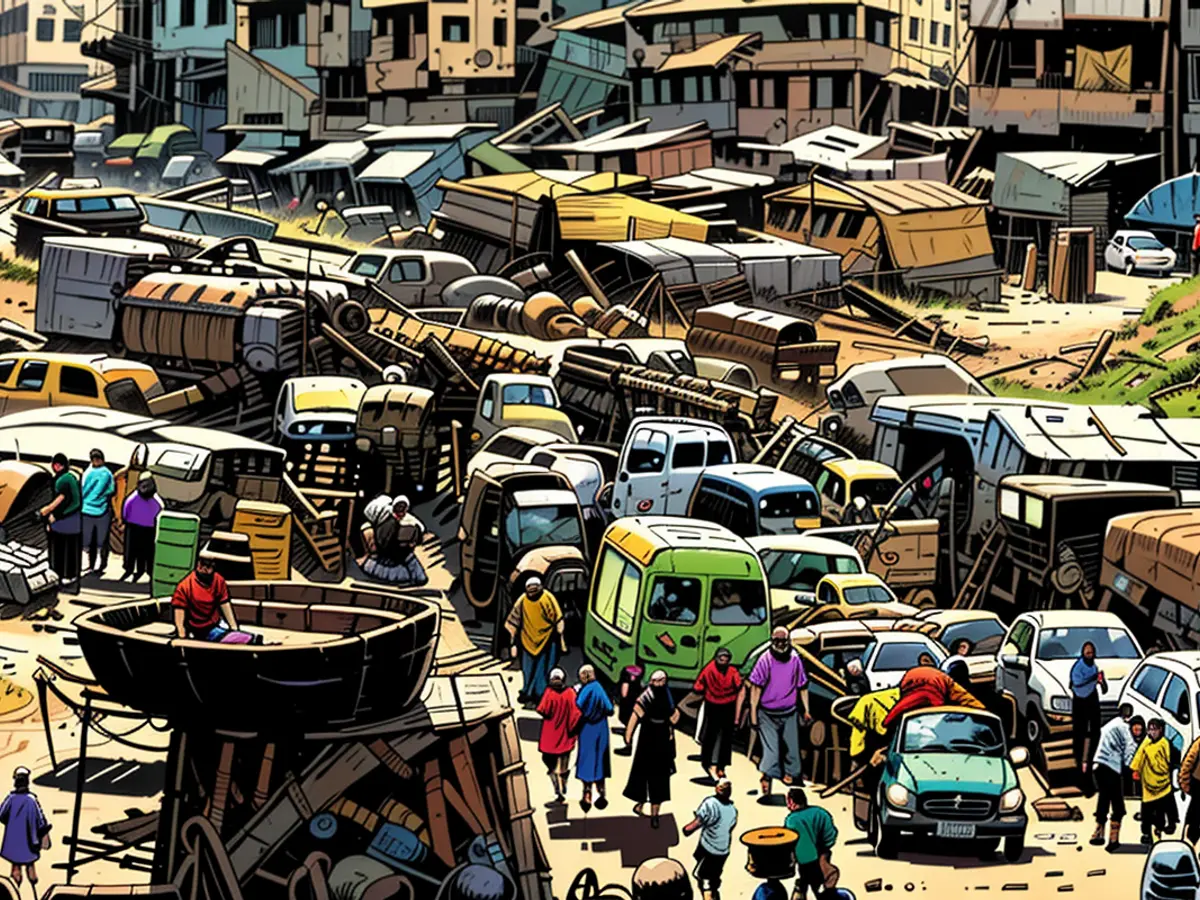Nocturnal in Gaza - UN: Humanitarian situation in Gaza Strip increasingly catastrophic
Again, tens of thousands of people in the Gaza Strip are fleeing following the latest evacuation order from Israel's Military. According to the United Nations, they are being left in a precarious humanitarian situation with devastating hygienic conditions. Humanitarian organizations are forced to close. People are being evicted even from makeshift shelters they had fled to before the war. UN organizations are warning of a further deterioration of the crisis for civilians.
150,000 people have already fled from Khan Younis
At the beginning of the week, Israel called on the inhabitants of a region in Khan Younis in the southern Gaza Strip to leave their homes due to a new military operation. According to estimates by the UN OCHA relief agency, 150,000 people quickly left their makeshift shelters. They are supposed to take refuge in the humanitarian zone Al-Mawasi west of Khan Younis and Rafah, where many people had already fled before. "Many were seen carrying nothing but the clothes on their backs," said OCHA.
Images from Khan Younis show crowds of people rushing to leave the city in the direction of the west. "Old people on donkey carts, people in wheelchairs being pushed through the sand, and their belongings piled on their laps," reported a spokesperson for the UN refugee agency UNRWA. "People are hearing gunshots and running for their lives."
Many people are fleeing to already overcrowded areas. "People are being forced to go to areas with little or no infrastructure, where there is only limited access to shelter, healthcare, sanitation facilities, and other humanitarian aid," said UN spokesperson Stephane Dujarric on Tuesday. According to OCHA, there were four medical facilities, eight kitchens, and distribution centers for food in the area. All but one community kitchen had to close.
Hygienic conditions in the Gaza Strip devastating
In many places, including in wide areas of the sealed coastal strip, the hygienic conditions are devastating. People live in overcrowded tent camps. Piles of garbage are growing everywhere because diesel for trucks to transport it is lacking, according to the World Health Organization (WHO). The unhygienic conditions increase health risks significantly.
Feces and sewage are flowing through the streets in some places because diesel is also needed for the sewage treatment plant generators. In areas with few toilets and little water, thousands of people are falling ill with diarrhea and skin diseases. Dust from the destroyed buildings releases respiratory infections.
Polio Virus detected in sewage samples
Under these conditions, the risk of disease spread, according to WHO, is very high. For example, the polio virus was detected in sewage samples. Although the polio virus has not yet been detected in any patient, the polio risk is very high, said WHO representative Ayadil Saparbekov on Tuesday. He warned of a worsening situation there: "It could be that more people die from infectious diseases than from injury-related causes."
Humanitarian and medical institutions had to close already. According to WHO, only 16 out of the 36 hospitals in the Gaza Strip can operate with restrictions. Four out of ten field hospitals are still in full operation, while four are operating with restrictions. If diseases continue to spread, the situation in the hospitals would worsen.
Trigger of the Gaza War was the unprecedented massacre committed by terrorists of Hamas and other extremist Palestinian organizations on October 7 in southern Israel. They killed over 1200 people and abducted further 250 as hostages into the Gaza Strip.
- The evacuation order from Israel's Military has resulted in tens of thousands of people fleeing from Rafah in the Gaza Strip.
- The UN and OCHA are expressing concern over the precarious situation of these displaced individuals, with many having to leave makeshift shelters.
- The UN World Health Organization (WHO) has reported devastating hygienic conditions in the Gaza Strip, with piles of garbage and a lack of access to sanitation facilities.
- The overcrowded tent camps and limited access to healthcare in the Gaza Strip are increasing health risks, with thousands falling ill with diarrhea and skin diseases.
- The WHO has detected the polio virus in sewage samples from the Gaza Strip, although no cases have been reported in patients yet.
- The humanitarian and medical institutions in the Gaza Strip have already been forced to close due to the conflicts in the area.
- Only 16 out of the 36 hospitals in Gaza are operating with restrictions, and the situation could worsen if diseases continue to spread.
- The Gaza War was triggered by a massacre committed by Hamas and extremist Palestinian organizations in southern Israel on October 7, resulting in over 1200 deaths and 250 abductions.
- Israel's Military deployment in the Gaza Strip has caused a crisis for civilians, forcing them to leave their homes and seek refuge in overcrowded areas.
- Nottage, as the host of a press conference, urged the international community to increase their assistance to the Palestinian Territories to alleviate the crisis in the Gaza Strip.








